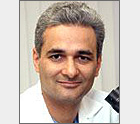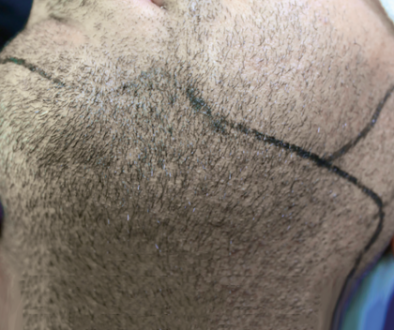Evaluating and Revising Hair Transplant Strip Scars
In this article, recommended hair restoration surgeon Dr. Parsa Mohebi shares his expert knowledge about evaluating and revising hair transplant scars.
 Scalp scars in strip hair transplants (follicular unit transplantation) have been a critical part of the surgical procedure ever since the innovation of hair transplant surgery. Hair restoration surgeons recognize that this is one of the greatest concerns after new hair growth for patients; some opt not to undergo hair restoration surgery for this reason. Follicular unit transplantation (FUT) leaves a linear transverse scar across the back of the head. Most scars are hidden in the patient’s hair as it grows after surgery. However in some instances due to proximity to hairlines or short styling, the scar could be visible.
Scalp scars in strip hair transplants (follicular unit transplantation) have been a critical part of the surgical procedure ever since the innovation of hair transplant surgery. Hair restoration surgeons recognize that this is one of the greatest concerns after new hair growth for patients; some opt not to undergo hair restoration surgery for this reason. Follicular unit transplantation (FUT) leaves a linear transverse scar across the back of the head. Most scars are hidden in the patient’s hair as it grows after surgery. However in some instances due to proximity to hairlines or short styling, the scar could be visible.
The size, type and location of the scar help determine the techniques that a surgeon will use to lessen the scar or to revise a preexisting scar from a procedure. The knowledge base of the hair transplant and cosmetic surgeon has led to the development of an algorithm that allows for the more effective use of methods to address scalp scars and the best medical approach to reduce them in healing or to revise them later.
When evaluating a scar for surgery or revision procedure, the surgeon considers:
- The prior history of patient scar occurrence.
- The Patient’s reaction to injuries in other parts of the body.
- A proper physical examination determining effects:
- of stretching
- hypertrophic reaction
- hair transection
Wide scars usually have components of stretching. Stretching can be improved by minimizing the contrast between the hairless scar and the nearby scalp. When revising a scar, one method is to bring proximal hair inside the scar.
Trichophytic closure is another very good technique that is utilized in closing the initial donor wound in a hair transplant. This lends to less scar. There are variants to this technique including upper, lower, double edged or partial trichophytic closure. A hair transplant surgeon evaluates the indications of each method for the benefit of the patient. Also considered is a small supplemental follicular unit extraction (FUE) procedure that might be used in addition to trichophytic closures in select scars. Top surgeons are able to assess the right surface of scalp that is needed to be de-epithelialized in order to bring the adequate amount of hair into the scar.
Every cosmetic surgeon should be familiar and knowledgeable about the cosmetic products or non-medical methods that could be used to improve scars. Evaluating the role of various techniques that are viable in improving the scar is an important part of hair transplant surgery and other cosmetic procedures.
Dr. Parsa Mohebi, MD
US Hair Restoration, Los Angeles, CA, USA.
—
David (TakingThePlunge)
Editorial Assistant and Forum Co-Moderator for the Hair Transplant Network, the Coalition Hair Loss Learning Center, and the Hair Loss Q & A Blog.
To share ideas with other hair loss sufferers visit the hair loss forum and social community
Get Proven Treatments at the Best Prices by visiting our new online hair loss treatment shop.
Watch hair transplant videos on YouTube
Technorati Tags: hair restoration, hair transplant, hair transplants, follicular unit, hair growth, FUT, Trichophytic closure, follicular unit extraction, FUE




September 11, 2012 @ 4:34 pm
Thanks for sharing this information Dr. Mohebi, I also like the fact that I could find it on Facebook. Content that is helpful is very refreshing to find online. All the Best.